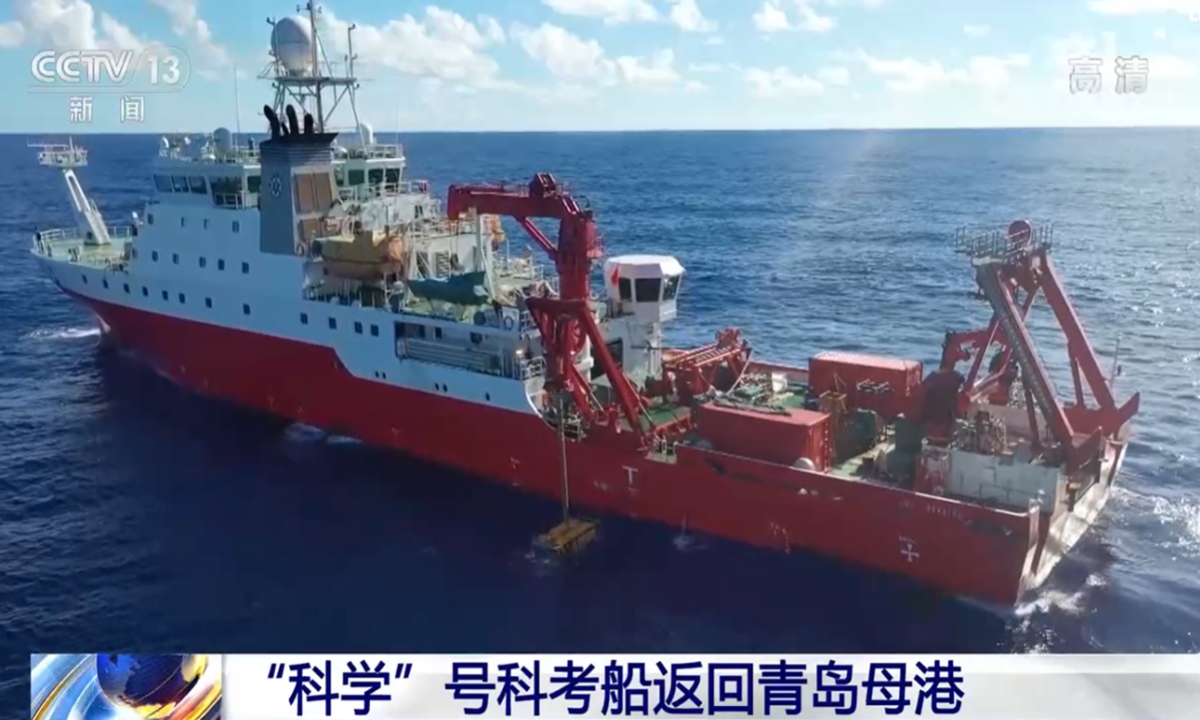Chinese scientific research ship returns from its first high-end user sharing voyage

The scientific research ship Kexue, which means “science,” during the voyage. Photo: screenshot of China’s Central Television Photo: CCTV
China’s scientific research ship Kexue, which means science, has returned from its first high-end user sharing voyage, during which experiments were carried out in deep sea. A large number of scientific discoveries have been made in the target sea area during the research.
The researchers also conducted sea trials of several sets of domestically-made research and development equipment, according to the Xinhua News Agency on Monday.
The research ship has returned to its home port in Qingdao, East China's Shandong Province, reported China’s Central Television on Tuesday.
“During this voyage, an underwater experimental platform was built on the deep seabed so that scientists were able to carry out experiments in the deep sea. The device allows scientists to figure out the adaptation mechanism of the extreme environment of deep-sea organisms,” Wang Xiaomin, an associate research fellow with Institute of Oceanology, Chinese Academy of Sciences (CAS), said in an interview with Xinhua.
In previous researches, samples collected from the deep sea were taken to the laboratory for follow-up research, but due to sudden changes in environment such as pressure and temperature, the physiological activities of deep-sea samples also changed, which adds difficulties for researchers to accurately recognize the life process of deep-sea creatures, Wang added.
During the voyage, the unmanned cable-controlled submersible on board the scientific ship performed 21 dives and obtained a large number of precious samples and data.
The domestically-made equipment has achieved a number of key technological breakthroughs through independent research and development, including the identification of submarine community creatures. The data and samples will answer major scientific questions such as the composition of the deep-sea dark food chains, deep sea carbon sources and carbon sinks, and the origin of life.
Scientists and researchers of 16 high-level research teams from nine institutes, including the CAS, Shanghai Jiao Tong University, Sun Yat-sen University, Shandong University, Xiamen University, and Ocean University of China, were involved in the voyage.
Global Times
